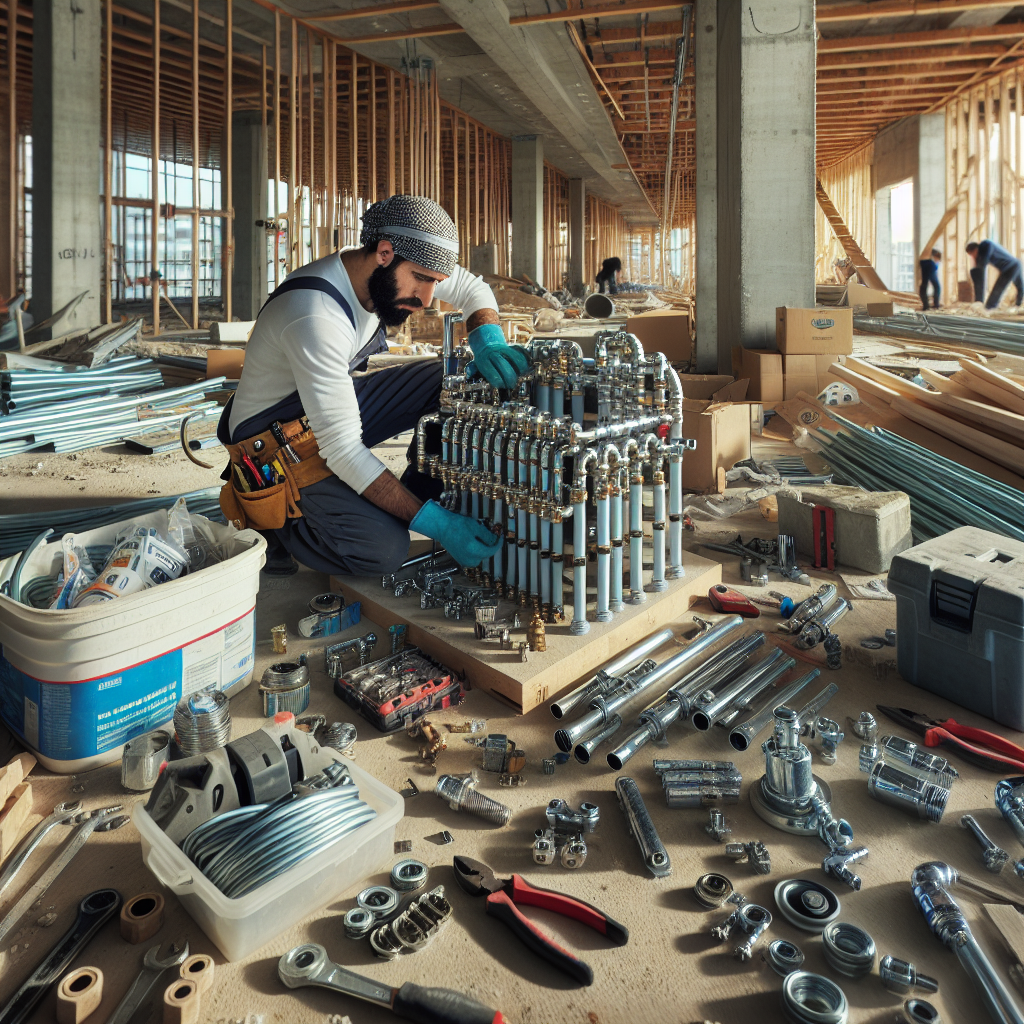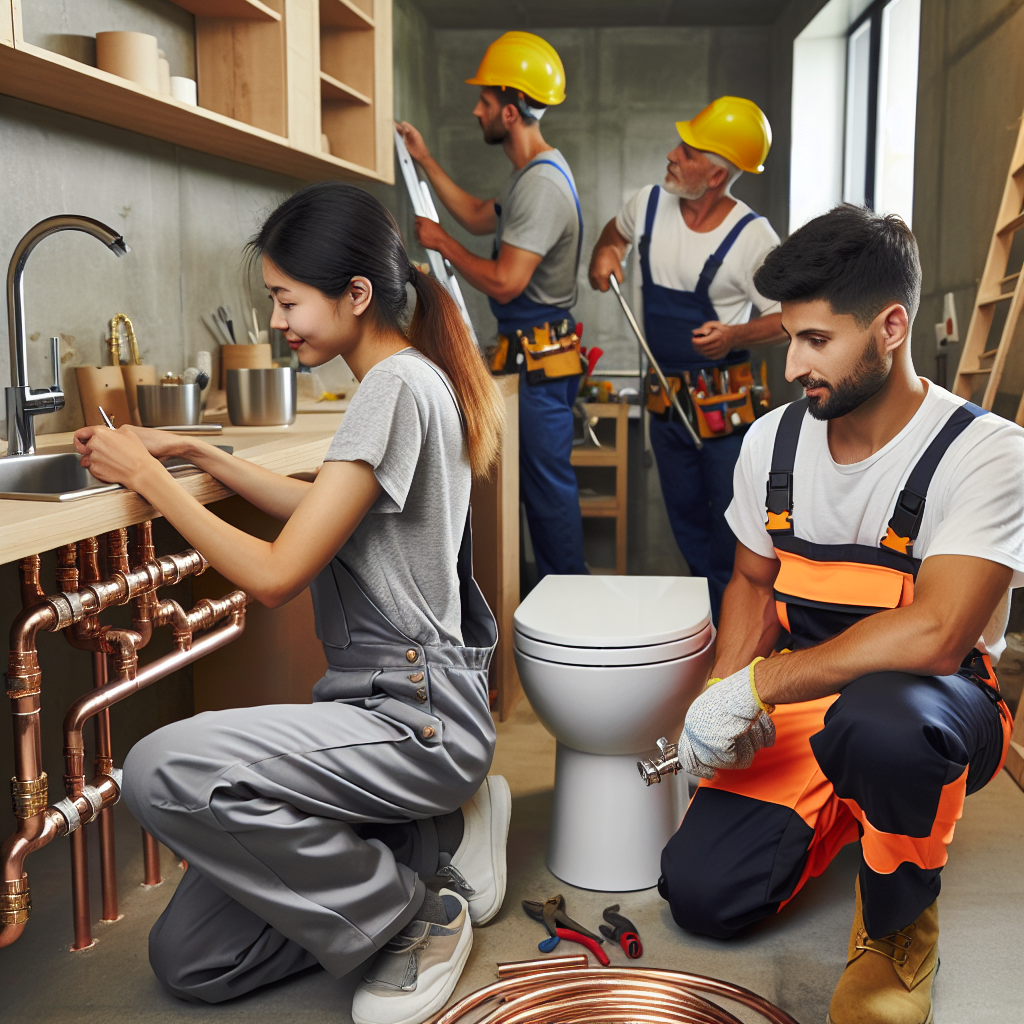Plumbing Fixture Installation for New Construction: A Comprehensive Guide

When it comes to new construction projects, one crucial aspect that often gets overlooked is plumbing fixture installation. While it may not be as glamorous as choosing paint colors or flooring materials, the proper installation of plumbing fixtures is essential for the functionality and longevity of a building. In this article, we will explore the key considerations, best practices, and frequently asked questions about plumbing fixture installation for new construction.
Key Considerations for Plumbing Fixture Installation
1. Plumbing System Design
Before diving into the installation process, it is crucial to have a well-designed plumbing system in place. This involves careful planning and coordination with architects, engineers, and plumbing professionals. The plumbing system design should take into account the building’s layout, water supply requirements, drainage needs, and local building codes.
For example, in areas prone to freezing temperatures, it is essential to design the plumbing system to prevent frozen pipes. This may involve insulating pipes, installing heat tape, or locating pipes in heated areas of the building. By considering these factors during the design phase, you can avoid costly and time-consuming issues down the line.
2. Quality Fixtures and Materials
Choosing high-quality fixtures and materials is crucial for the long-term durability and performance of the plumbing system. Opting for cheap or substandard fixtures may result in frequent leaks, clogs, and other plumbing issues. It is worth investing in fixtures from reputable manufacturers that offer warranties and have a track record of reliability.
Additionally, selecting the right materials for pipes, fittings, and connectors is essential. Different materials, such as copper, PVC, or PEX, have their own advantages and limitations. Consulting with a plumbing professional can help you determine the most suitable materials for your specific project.
3. Proper Installation Techniques
The installation of plumbing fixtures requires skilled professionals who are knowledgeable about the latest industry standards and best practices. Hiring experienced plumbers or plumbing contractors is crucial to ensure that the installation is done correctly and meets all necessary codes and regulations.
Improper installation can lead to leaks, water damage, and even health hazards. For example, incorrect venting of plumbing fixtures can result in the release of harmful gases, such as carbon monoxide. By following proper installation techniques, you can avoid these potential risks and ensure the safety of occupants.
4. Coordination with Other Trades
In new construction projects, plumbing fixture installation is just one piece of the puzzle. It is essential to coordinate with other trades, such as electricians, HVAC technicians, and carpenters, to ensure a smooth and efficient construction process.
For example, coordinating with electricians is crucial when installing fixtures that require electrical connections, such as water heaters or smart faucets. By working together and communicating effectively, you can avoid conflicts and ensure that all necessary infrastructure is in place before the final installation of plumbing fixtures.
Best Practices for Plumbing Fixture Installation
1. Pre-Installation Inspection
Before starting the installation process, it is essential to conduct a thorough inspection of the plumbing system. This includes checking for any existing issues, such as leaks or damaged pipes, and addressing them before proceeding with the installation.
Additionally, inspecting the building’s layout and design can help identify any potential challenges or modifications required for the installation. By addressing these issues early on, you can avoid delays and costly rework later in the construction process.
2. Accurate Measurements and Layout
Precision is key when it comes to plumbing fixture installation. Accurate measurements and layout ensure that fixtures are properly aligned, connected, and function as intended. This includes measuring distances, heights, and angles to ensure a seamless installation.
Using advanced tools, such as laser levels or digital measuring devices, can help achieve precise measurements and layout. Additionally, following manufacturer guidelines and specifications for each fixture is crucial to ensure proper installation and optimal performance.
3. Testing and Inspection
Once the plumbing fixtures are installed, it is essential to conduct thorough testing and inspection. This involves checking for leaks, proper drainage, and functionality of each fixture. Testing should be done under normal operating conditions to simulate real-world usage.
Inspecting the installation for compliance with local building codes and regulations is also crucial. This may involve scheduling inspections with local authorities or hiring third-party inspectors to ensure that the installation meets all necessary standards.
4. Ongoing Maintenance and Service
Proper maintenance and regular servicing of plumbing fixtures are essential for their longevity and optimal performance. Educating building owners or occupants about routine maintenance tasks, such as cleaning aerators or checking for leaks, can help prevent major issues and prolong the lifespan of fixtures.
Additionally, establishing a relationship with a reputable plumbing service provider can ensure prompt and efficient repairs or replacements when needed. Regular inspections and preventive maintenance can help identify potential issues before they escalate into costly repairs.
Frequently Asked Questions about Plumbing Fixture Installation for New Construction
1. What types of plumbing fixtures are commonly installed in new construction?
Common plumbing fixtures installed in new construction include sinks, toilets, showers, bathtubs, faucets, water heaters, and garbage disposals. These fixtures are essential for providing water supply, drainage, and sanitation in residential, commercial, and industrial buildings.
2. How long does it take to install plumbing fixtures in a new construction project?
The time required for plumbing fixture installation in a new construction project depends on various factors, such as the size of the building, complexity of the plumbing system, and the number of fixtures to be installed. On average, it can take several weeks to a few months to complete the installation process.
3. Can I install plumbing fixtures myself or should I hire a professional?
While some minor plumbing tasks can be done by homeowners or DIY enthusiasts, it is highly recommended to hire a professional for plumbing fixture installation in new construction projects. Professional plumbers have the necessary skills, knowledge, and experience to ensure proper installation and compliance with building codes.
4. How much does plumbing fixture installation cost in new construction?
The cost of plumbing fixture installation in new construction can vary depending on factors such as the size of the building, complexity of the plumbing system, and the type of fixtures being installed. It is best to obtain multiple quotes from reputable plumbing contractors to get an accurate estimate for your specific project.
5. What are the common challenges in plumbing fixture installation for new construction?
Some common challenges in plumbing fixture installation for new construction include coordinating with other trades, dealing with unexpected issues or modifications, and ensuring compliance with local building codes. Proper planning, communication, and working with experienced professionals can help overcome these challenges effectively.
Summary
Plumbing fixture installation is a critical aspect of new construction projects. By considering key factors such as plumbing system design, quality fixtures and materials, proper installation techniques, and coordination with other trades, you can ensure a successful and efficient installation process. Following best practices, such as pre-installation inspection, accurate measurements, testing and inspection, and ongoing maintenance, can further enhance the performance and longevity of plumbing fixtures. By understanding the frequently asked questions and their detailed answers, you can make informed decisions and ensure a smooth plumbing fixture installation process for your new construction project.
For professional plumbing fixture installation services in North Bay, Ontario, visit North Bay Contractors.

